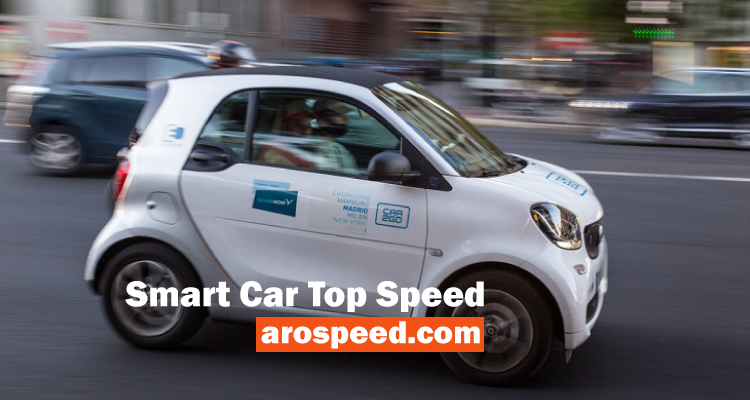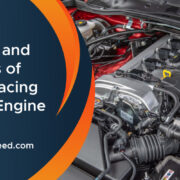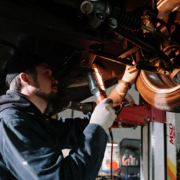The automotive industry is undergoing a transformative revolution, with smart car top speed leading the charge towards a more connected and efficient future. As the world witnesses advancements in electric and autonomous vehicle technologies, one crucial aspect that continues to captivate enthusiasts and engineers alike is the top speed capabilities of smart cars like Bugatti. This article delves into the thrilling realm of smart car top speeds, exploring the technological innovations, challenges, and the quest for pushing the boundaries of velocity.
| Smart Car Model | Top Speed (mph) | Powertrain | Notable Features |
| Tesla Roadster | 250+ | Electric | Acceleration, Long Range, Autonomous Capability |
| Tesla Model S Plaid | 200+ | Electric | Tri-Motor Setup, Ludicrous Mode, Autopilot |
| Porsche Taycan Turbo S | 161 | Electric | High Performance, Fast Charging, Sporty Design |
| Audi e-tron GT | 152 | Electric | Grand Tourer, Premium Interior, Advanced Tech |
| Rimac C_Two | 258 | Electric | Hypercar, Exceptional Acceleration, Autonomy |
| Lucid Air Dream Edition | 168 | Electric | Luxury Sedan, Extended Range, Advanced Safety |
| NIO EP9 | 194 | Electric | Supercar, Nurburgring Lap Record, High Downforce |
| BMW i4 M50 | 140+ | Electric | M Performance, Sporty Design, iDrive Infotainment |
| Ford Mustang Mach-E GT | 118 | Electric | SUV, Mustang Heritage, GT Performance Package |
| Volkswagen ID.4 GTX | 112 | Electric | All-Wheel Drive, Versatile SUV, Connected Tech |
Table of Contents
Evolution of Smart Cars
Before delving into the top speed capabilities of smart cars, it’s essential to understand their evolution. Smart cars, often associated with compact size and fuel efficiency, have evolved from being purely utilitarian vehicles to sophisticated machines equipped with cutting-edge technologies. The integration of electric powertrains, advanced driver-assistance systems (ADAS), and connectivity features has redefined the automotive landscape.
Defining Smart Car Top Speed
The smart car top speed refers to the fastest speed velocity it can achieve under optimal conditions. Traditionally, top speeds were a metric associated with sports cars and high-performance vehicles. However, as smart cars become more powerful and technologically advanced, their top speeds have become a point of interest and competition within the automotive industry.
The Role of Electric Powertrains
One of the primary factors influencing the smart car top speed is the type of powertrain they utilize. Electric vehicles (EVs) have become a focal point in the pursuit of sustainability and performance. Unlike traditional internal combustion engines, electric motors provide instantaneous torque and a smooth power delivery and that why these becomes fastest cars, contributing to impressive acceleration and high-top speeds.
High-Performance Electric Smart Cars
Several manufacturers have embraced the challenge of creating high-performance smart cars with impressive most fastest speed cars. Tesla, a pioneer in the electric vehicle market, has set the benchmark with models like the Tesla Roadster and the Tesla Model S Plaid. These cars showcase the potential of electric powertrains in achieving remarkable speeds while maintaining a commitment to sustainability.
Autonomous Vehicles and Speed
The rise of autonomous vehicles introduces a unique perspective to the discussion of top speeds. While the focus on autonomous driving is primarily on safety and convenience, the integration of artificial intelligence and advanced sensors can potentially enhance a smart car’s ability to navigate at higher speeds with precision. However, regulatory challenges and public perception remain significant hurdles.
Technological Innovations Boosting Top Speeds
A variety of technological innovations contribute to the enhanced top speeds of smart cars. These include advancements in battery technology, aerodynamics, lightweight materials, and regenerative braking systems. As researchers and engineers continue to push the boundaries of what is technologically possible, smart cars are poised to achieve even higher top speeds in the future.
Challenges in Achieving Higher Top Speeds
Despite the progress in enhancing smart car top speeds, several challenges persist. Range anxiety, a common concern for electric vehicles, becomes more pronounced at higher speeds. Balancing speed with energy efficiency and addressing the limitations of current battery technologies are critical challenges that manufacturers must navigate.
Speed and Safety
While the thrill of high-speed racers driving is undeniable, safety remains a paramount concern. Smart cars are equipped with advanced safety features, including collision detection, lane-keeping assistance, and adaptive cruise control. The challenge lies in harmonizing speed capabilities with safety protocols to ensure that the pursuit of velocity does not compromise the well-being of drivers and passengers.
The Role of Connectivity
Connectivity features play a crucial role in the overall driving experience and, indirectly, the top speed capabilities of smart speed cars. Real-time traffic data, predictive analytics, and over-the-air updates contribute to optimized route planning and system performance, influencing how efficiently a smart car can operate at high speeds.
Future Prospects and Racing Circuits
The quest for higher top speeds demon smart cars has led to the emergence of electric racing series, such as Formula E. These events provide a platform for manufacturers to showcase the capabilities of their electric vehicles in a competitive environment. As technology continues to advance, it’s plausible to envision smart cars participating in traditional racing circuits, competing against their gasoline-powered counterparts.
The Cultural Impact of Smart Car Speed
Beyond the technological and performance aspects, the top speeds of smart cars have cultural implications. The acceleration of smart cars into the realm of high-performance vehicles challenges traditional perceptions, reshaping the image of these vehicles from purely practical to thrilling and dynamic. This shift has the potential to attract a broader audience to the world of smart cars.
Environmental Considerations
While the focus on achieving higher top speeds is exhilarating, it is essential to address the environmental considerations associated with pushing the limits of velocity. The carbon footprint of high-speed driving, even in electric vehicles, should be carefully examined. Striking a balance between performance and sustainability is crucial for the long-term viability of smart cars.
Regulatory Landscape
The regulatory landscape plays a pivotal role in determining the permissible top speeds of smart cars. Different regions have varying speed limits and safety standards, influencing how manufacturers design and market their vehicles. As smart cars evolve, regulatory bodies will need to adapt to ensure a harmonious integration of these advanced vehicles into existing traffic ecosystems.
Consumer Preferences
Understanding consumer preferences is paramount in shaping the trajectory of smart cop car development. While some drivers prioritize speed and performance, others may place greater emphasis on efficiency, safety, or connectivity features. Striking a balance between these diverse preferences will be crucial for manufacturers seeking to capture a significant share of the smart car market.
The Integration of Artificial Intelligence
In the pursuit of higher top speeds, the integration of artificial intelligence (AI) emerges as a crucial factor. Advanced driver-assistance systems (ADAS) powered by AI algorithms contribute to the overall performance and safety of smart cars. These systems can analyze real-time data from sensors and cameras, making split-second decisions that enhance both acceleration and deceleration, crucial elements in achieving and maintaining high speeds.
Enhancements in Battery Technology
The heart of any electric vehicle is its battery, and ongoing improvements in battery technology have a direct impact on a smart car’s top speed. Manufacturers are investing heavily in research and development to increase energy density, reduce charging times, and enhance overall battery performance. As battery technology advances, smart cars will be able to sustain higher speeds for longer durations, mitigating concerns about range limitations during high-speed drives.
Aerodynamics and Speed
Aerodynamics play a pivotal role in a vehicle’s ability to cut through the air with minimal resistance. Smart cars are benefiting from advanced aerodynamic designs that not only contribute to increased efficiency but also enable higher top speeds. From sleek exteriors to innovative spoiler designs, manufacturers are employing various strategies to optimize the aerodynamic profile of smart cars, allowing them to achieve and maintain higher velocities.
Lightweight Materials for Performance
Reducing a vehicle’s weight is a fundamental strategy in enhancing performance, including top speed. Smart car manufacturers are increasingly turning to lightweight materials such as carbon fiber and aluminum to construct their vehicles. These materials offer a favorable strength-to-weight ratio, contributing to improved acceleration and higher achievable speeds. The balance between structural integrity and weight reduction is a delicate yet essential aspect of smart car design.
Regenerative Braking Systems
The quest for higher top speeds is not only about acceleration but also about efficient deceleration. Regenerative braking systems, common in electric vehicles, harness kinetic energy during braking and convert it back into electrical energy. This not only enhances the overall energy efficiency of smart cars but also contributes to a smoother braking experience, allowing for precise control over deceleration even at high speeds.
Range Anxiety and High-Speed Driving
One of the significant challenges associated with high-speed driving in smart cars is the potential impact on range anxiety. While advancements in battery technology are addressing this concern, the balance between speed and range remains a delicate one. Manufacturers are working to develop innovative solutions, such as fast-charging infrastructure and improved energy regeneration, to alleviate concerns about range limitations during high-speed journeys.
Autonomous Driving and High-Speed Capabilities
The integration of autonomous driving capabilities introduces a paradigm shift in the relationship between technology and speed. Autonomous systems, equipped with advanced sensors and AI algorithms, have the potential to optimize driving conditions for higher speeds while ensuring safety. However, the deployment of fully autonomous vehicles capable of achieving and maintaining high speeds presents a unique set of regulatory and technological challenges that the industry is actively addressing.
Racing as a Testbed for Innovation
The world of motorsports has always served as a testbed for automotive innovation, and smart cars are no exception. Electric racing series, such as Formula E, provide a platform for manufacturers to push the limits of electric vehicle performance. The lessons learned on the racetrack, from battery management to aerodynamics, contribute to the continuous improvement of smart car technology and its ability to achieve higher top speeds.
Challenges in Achieving Ultra-High Speeds
While current high-performance smart cars boast impressive top speeds, achieving ultra-high speeds comparable to traditional supercars remains a challenge. The limitations imposed by battery technology, aerodynamics, and safety considerations present obstacles that engineers are actively working to overcome. The pursuit of ultra-high speeds requires a comprehensive approach that addresses not only technological barriers but also safety, infrastructure, and regulatory considerations.
Safety Considerations at High Speeds
Ensuring the safety of drivers, passengers, and other road users is paramount, particularly when pushing the limits of speed. High-performance smart cars are equipped with advanced safety features, including collision avoidance systems, emergency braking, and stability control. The challenge lies in integrating these safety systems seamlessly with the dynamic demands of high-speed driving to prevent accidents and mitigate the severity of potential collisions.
Connectivity in the High-Speed Era
As smart cars evolve to achieve higher speeds, the role of connectivity becomes even more critical. Real-time data exchange between vehicles, infrastructure, and the surrounding environment enables adaptive driving strategies and enhances overall safety. From vehicle-to-vehicle (V2V) communication to smart traffic management systems, connectivity contributes to creating a cohesive and secure ecosystem for high-speed smart car travel.
Cultural Shifts and the Perception of Smart Cars
The integration of high-speed capabilities in smart cars contributes to a broader cultural shift in how these vehicles are perceived. Smart cars, once associated primarily with urban commuting and environmental consciousness, are expanding their image to include elements of excitement and performance. This evolution in perception has the potential to attract a wider audience, including enthusiasts who appreciate both sustainability and exhilarating driving experiences.
Environmental Sustainability in High-Speed Driving
Balancing the pursuit of high-speed capabilities with environmental sustainability is a critical consideration. The carbon footprint associated with high-speed driving, particularly in electric vehicles, necessitates a holistic approach. Manufacturers, policymakers, and consumers must collaborate to ensure that advancements in speed do not compromise the long-term environmental goals of reducing emissions and promoting sustainable transportation.
Public Perception and Acceptance of High-Speed Smart Cars
Public acceptance of high-speed smart cars is influenced by various factors, including safety, environmental impact, and societal norms. As manufacturers push the boundaries of what smart cars can achieve, effective communication about the benefits, safety measures, and overall impact on the driving experience is crucial. Addressing public concerns and fostering a positive perception of high-speed smart cars will play a pivotal role in their widespread adoption.
Conclusion
In conclusion, the exploration of smart car top speeds unveils a multifaceted landscape that combines technological innovation, safety considerations, environmental consciousness, and shifts in cultural perception. The convergence of these factors is reshaping the automotive industry, propelling smart cars into a future where high-speed capabilities coexist with sustainability and connectivity, creating a driving experience that transcends conventional expectations.








Comments